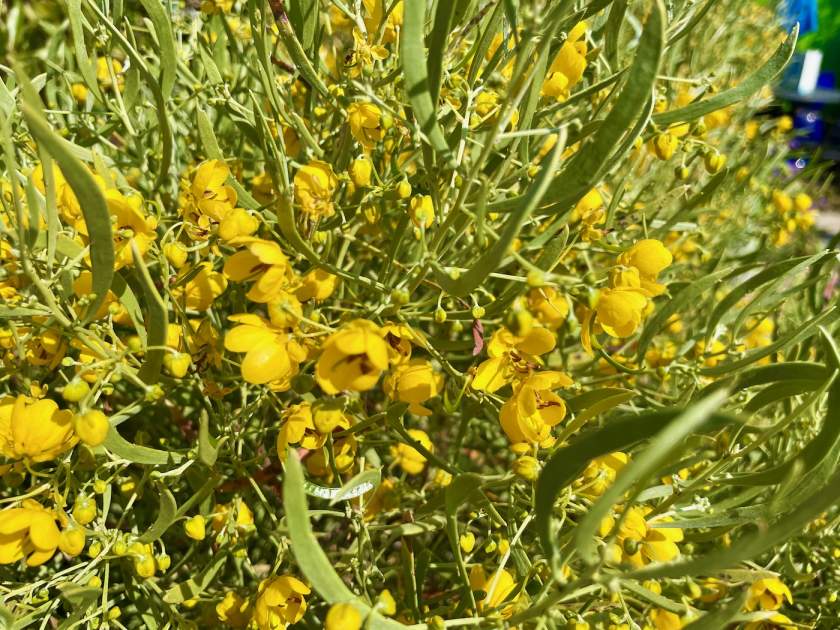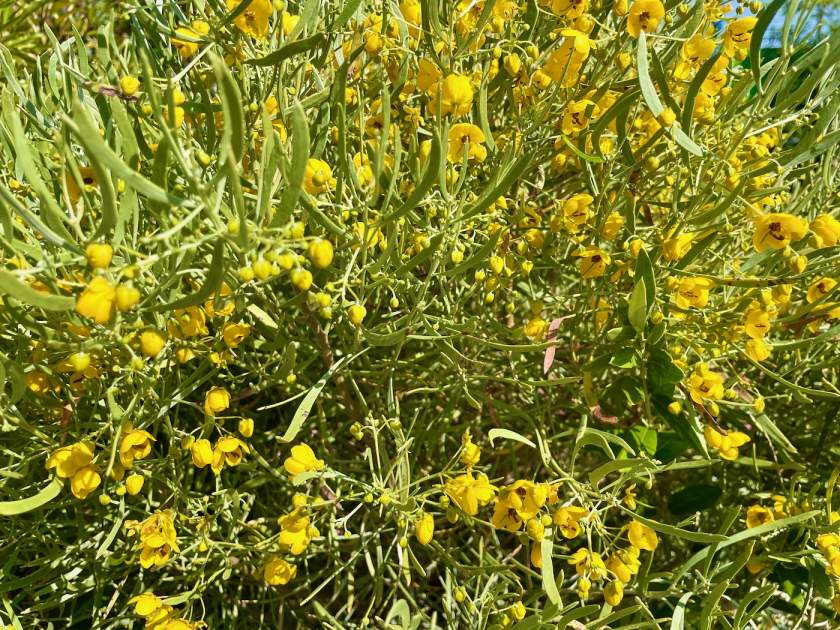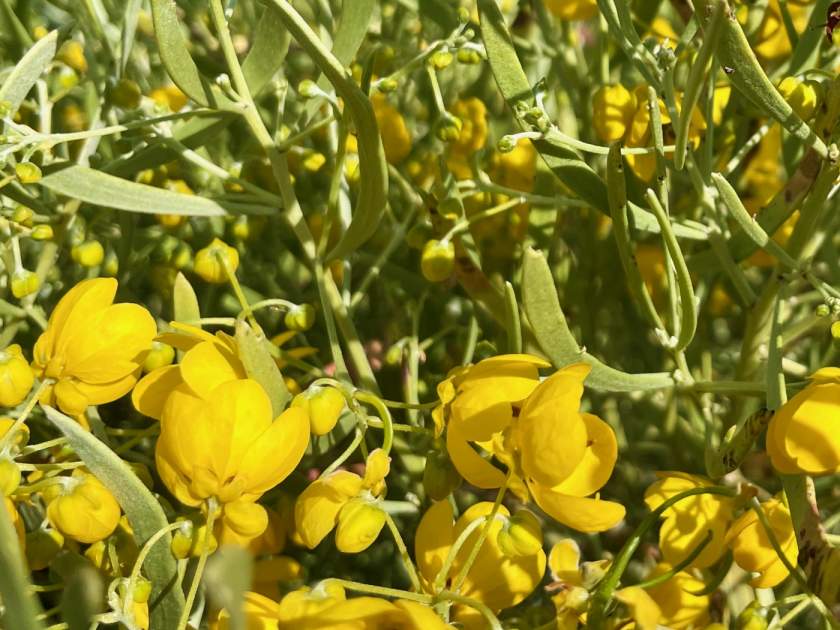Senna phyllodinea – Silver Leaf Cassia: A Showy and Drought-Tolerant Shrub
Senna phyllodinea, commonly known as Silver Leaf Cassia, is a striking evergreen shrub that originates from Australia. Belonging to the Fabaceae family, this medium-sized shrub features distinctive silver-gray falcate leaves and vibrant yellow flowers. With its adaptability to hot and dry conditions, Senna phyllodinea is an excellent choice for landscapes that require low-maintenance, drought-tolerant plants. In this article, we will explore the characteristics and cultivation tips for Senna phyllodinea, offering valuable insights for gardeners interested in incorporating this showy shrub into their outdoor spaces.
Characteristics:
Senna phyllodinea is a fast-growing evergreen shrub that typically reaches a height and width of 4 to 6 feet. Its limber branches hold distinctive, flattened silver-gray falcate leaves, which measure around 2 to 3 inches in length. These leaves often have two lobes near the tip, creating an interesting visual texture. When illuminated by sunlight, the silver leaves shimmer and reflect light. During the winter to early spring, Senna phyllodinea produces showy yellow flowers in mass on branched terminal clusters. The flowers, around 3/4 inches wide, attract bees and butterflies. Following the flowering period, the shrub develops dangling papery brown seedpods that persist for months. Overall, Senna phyllodinea showcases both attractive foliage and vibrant blooms, making it an eye-catching addition to any landscape.

Cultivation of Senna phyllodinea:
Sunlight: Senna phyllodinea thrives in full sun to partial shade conditions. It prefers at least 6 hours of direct sunlight per day to ensure healthy growth and optimal flower production. Placing the shrub in a location with ample sunlight will enhance its silver leaf coloration and encourage abundant blooms.
Watering: Senna phyllodinea is a drought-tolerant plant and should be watered sparingly. Water the shrub when the top few inches of soil become dry. Overwatering can lead to root rot and other issues, so it is important to allow the soil to partially dry out between waterings. During periods of prolonged drought, occasional deep watering can help sustain the plant’s health.
Soil: Senna phyllodinea prefers well-draining soils. Sandy soils with good drainage are ideal for this shrub’s growth. If the soil in your garden tends to retain water or is heavy in texture, amending it with organic matter, such as compost or peat moss, can improve drainage and create a more suitable environment for the plant.
Pest and Disease Control: Senna phyllodinea is generally resistant to pests and diseases. However, it may occasionally attract common garden pests like mealybugs, scale insects, or spider mites. Regularly inspect the plant for any signs of infestation, such as webbing, sticky residue, or distorted leaves. If pests are present, you can remove them manually or use organic insecticidal soaps or neem oil to control the infestation. Maintaining good garden hygiene and providing adequate air circulation around the plant can help prevent the onset of fungal diseases.
Propagation:
Senna phyllodinea can be propagated from both seeds and cuttings. To propagate from seeds, sow them in well-draining soil and keep the soil consistently moist until germination occurs. For propagation from cuttings, take healthy stem cuttings, remove the lower leaves, and dip the cut end in a rooting hormone. Plant the cuttings in a well-draining potting mix and keep them in a warm, humid environment. Provide regular misting to keep the foliage hydrated and promote root development. Once rooted, the cuttings can be transplanted into larger containers or directly into the garden.
With its stunning silver leaves, vibrant yellow flowers, and ability to withstand harsh conditions, Senna phyllodinea is a valuable addition to gardens and landscapes. This drought-tolerant shrub provides year-round interest and requires minimal care. By following the cultivation tips outlined above, gardeners can enjoy the beauty and resilience of Senna phyllodinea in their outdoor spaces.





